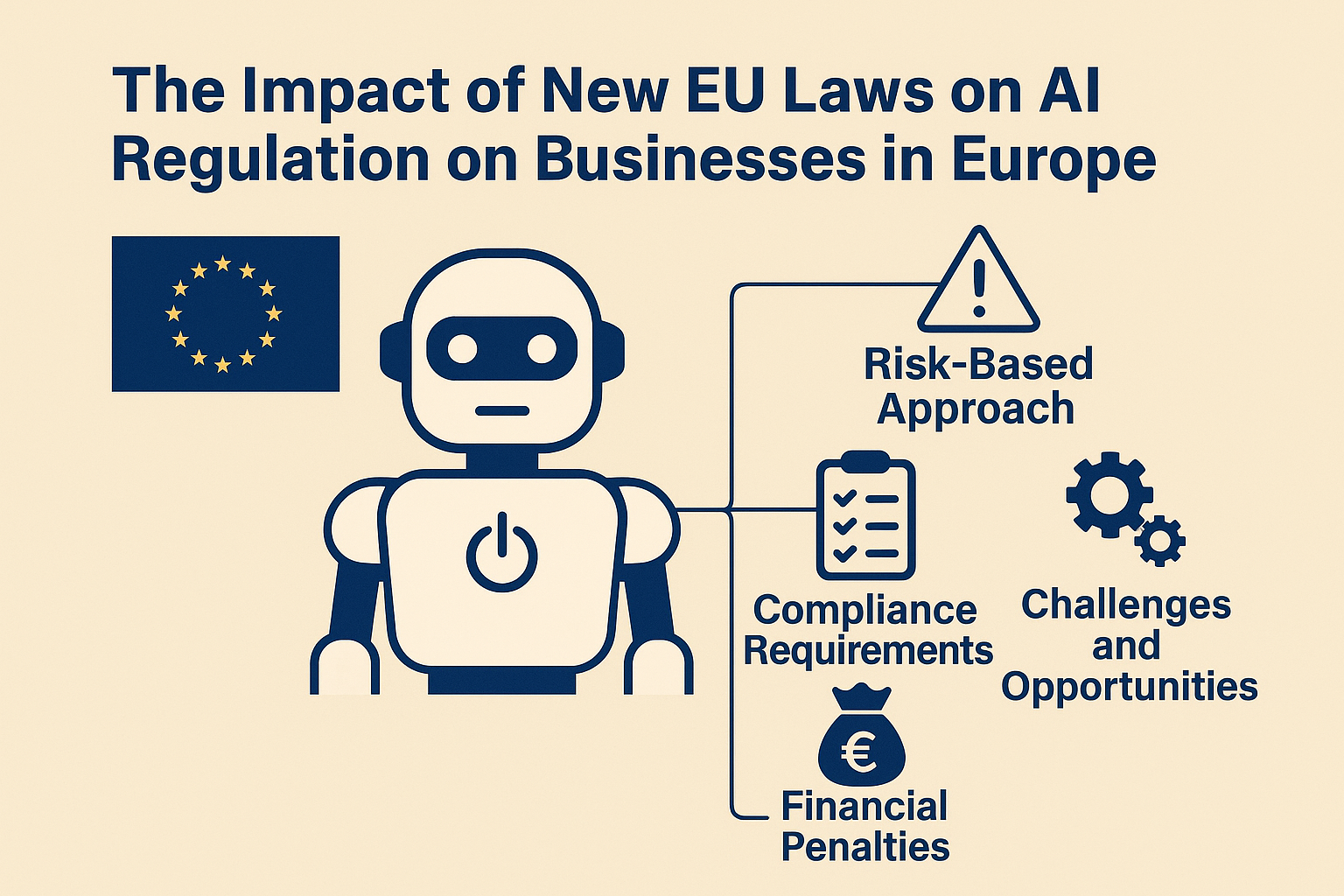Artificial intelligence is moving fast, but so are the lawmakers. This summer, the European Union made history by introducing the AI Act — the first comprehensive set of rules for AI anywhere in the world.
If you run a business that develops, sells, or even just uses AI tools, this law isn’t something you can ignore. It doesn’t just apply to tech giants in Berlin or Paris. If your AI systems touch EU customers in any way, you may have to play by these rules — whether you’re based in Munich, Madrid, or Miami.
Let’s break down what’s in the AI Act, why it matters, and what you should be doing about it.
1. Who Needs to Pay Attention? (Hint: Probably You)
One of the biggest misconceptions about the AI Act is that it’s “just for European companies.” Not true.
The rules apply to:
Providers – businesses that develop and place AI systems on the EU market.
Deployers – companies that use AI tools in their operations.
Importers and distributors – even if you just repackage or resell AI from someone else.
So, if you have an AI-powered recruitment platform in the U.S., and an HR manager in France uses it, you’re in scope. The EU has borrowed a page from GDPR here: it’s market-based, not location-based.
2. The Risk-Based Approach: Not All AI Is Equal
The EU knows that not every AI tool carries the same potential for harm. A chatbot recommending lunch spots is not the same as an algorithm deciding who gets approved for a loan.
That’s why the AI Act groups systems into four categories:
Unacceptable risk – completely banned. Think social scoring like in some dystopian movies, or real-time biometric tracking in public spaces (with some law enforcement exceptions).
High risk – heavy regulation. These include AI systems in healthcare, finance, education, recruitment, law enforcement, and critical infrastructure. They’ll need rigorous testing, documentation, and ongoing oversight.
Limited risk – lighter rules, mostly around transparency. For example, letting users know they’re talking to a chatbot.
Minimal risk – essentially free to operate without extra compliance burdens.
There’s also a special mention for General Purpose AI (GPAI) — the big, versatile models like ChatGPT or other foundation models. These have their own transparency requirements, especially if they’re high capability.
3. Deadlines Are Coming Fast
The AI Act isn’t being switched on all at once. The rules roll out in phases:
February 2025 – The ban on “unacceptable risk” AI kicks in.
August 2025 – New transparency rules for general-purpose AI models take effect, alongside a voluntary Code of Practice that companies are encouraged to follow.
2026 onwards – Most high-risk AI requirements will apply, including conformity assessments and stricter oversight.
The message is clear: if your AI product or process could be classified as “high risk,” you should be preparing now. Waiting until 2026 is a recipe for last-minute panic.
4. The Cost of Getting It Wrong
The EU isn’t shy about penalties. Fines can reach:
Up to €35 million or 7% of global annual turnover for the most serious breaches (like using prohibited AI).
Up to €15 million or 3% of turnover for other major violations.
Even smaller infractions, like providing false information, can cost millions.
For global companies, this is in the same league as GDPR fines — meaning it’s a real financial threat, not just a slap on the wrist.
5. Small Business? You’re Not Off the Hook
The EU knows these rules could feel heavy for startups and smaller companies, so the Act includes some SME-friendly measures:
Simplified compliance steps.
Access to regulatory sandboxes for testing new AI systems under supervision.
Official tools, like the AI Act Compliance Checker, to help assess obligations without hiring a team of lawyers.
That said, “simplified” doesn’t mean “optional.” Even small AI businesses need to prove they’re acting responsibly.
6. What Businesses Should Be Doing Right Now
Here’s a practical roadmap:
Step 1 – Map your AI use
Create an inventory of every AI system your business touches — whether you built it, bought it, or just use it in your daily workflow.
Step 2 – Classify the risk
Work out which category each system falls into: unacceptable, high, limited, or minimal risk. Don’t forget GPAI tools if you use or distribute them.
Step 3 – Prepare for assessmentsIf you have high-risk AI, start building the documentation and quality checks now. This might mean hiring compliance specialists or working with an external assessor.
Step 4 – Get your data in order
The AI Act expects systems to be trained on accurate, representative, and lawfully sourced data. If your AI relies on questionable datasets, fix that before it becomes a legal liability.
Step 5 – Watch the Code of Practice
Even if voluntary, signing up early can boost trust with customers, investors, and regulators. It’s also a great way to get ahead of the curve before certain practices become mandatory.
7. Risks vs. Opportunities
Critics say the AI Act could slow innovation in Europe, pushing startups to friendlier regulatory climates. Supporters argue it will boost trust in AI, making customers and governments more willing to adopt it.
For businesses, it’s both a challenge and a branding opportunity. Those who can show they’re compliant, ethical, and transparent may find it easier to win deals, especially with large organizations that can’t risk non-compliance.
8. Looking Beyond Europe
The AI Act is likely to influence laws outside the EU, just like GDPR did. Countries from Canada to Brazil are already watching closely. Even if you don’t operate in Europe today, preparing for these kinds of rules could future-proof your business.
Final Thoughts
The EU’s AI Act isn’t just another set of industry guidelines — it’s a legal milestone that will reshape how AI is built, sold, and used.
Yes, it’s stricter than what many other regions currently have. But it’s also a chance for businesses to show leadership, differentiate themselves, and build AI products that customers can actually trust.
The smart move? Don’t wait for the deadline. Start building compliance into your AI strategy now. Because in the new AI economy, trust might just be your biggest competitive advantage.


